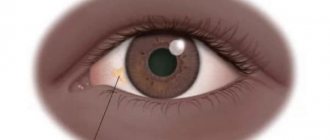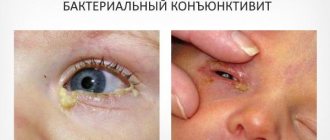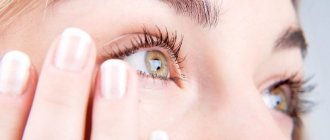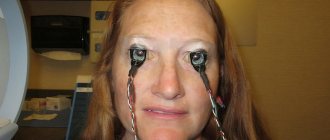If yellow sclera of the eyes is detected, the reasons for this phenomenon may be different. Most often, they indicate the presence of systemic diseases that are quite serious for the body. Yellowing sclera may appear if the liver is affected or a pathological condition of the biliary tract is noted. In this case, a person may experience yellowness of the mucous membranes, and sometimes the skin next to the eyes changes color. Signs of the disease are considered quite dangerous, so if they occur, it is recommended to quickly seek advice from a specialist with a good reputation.
A person's face reflects his mood, and with a little care, you can learn a lot about his habits. Often the face also shows signs of diseases present in the body. The eyes can especially tell a lot - by looking closely at the condition of the whites, you can learn a lot about the health of their owner.
What do human eyes look like?
That part of the eye that is visible to everyone consists of several sections: a small circle inside, black, called the pupil; around it is a colored part called the iris. The color of the eyes is judged by its color, calling them brown, gray or blue.
If the visual organs are healthy, the eyeball from the outside is perceived as white. This zone is usually called the protein, but in medical language it is called the sclera.
The eyeball is surrounded by membranes. There are three of them - one is inside, one is in the middle and one is outside. The latter plays the most significant role, since it is characterized by the greatest strength. It is able to support the eyeball, muscles are attached to it, due to which eye movement occurs. If there is a change in the color of the sclera, for example, their intense yellowing, a dysfunction of the body can be suspected. They may concern not only the organs of vision, but also indicate the presence of problems in the functioning of certain systems and organs.
Eye diseases
Yellow eyes sometimes indicate ophthalmological problems. The symptom of yellowness is characteristic of the following diseases:
- Pinguecula
. This is a yellowish wen that grows on the conjunctival membrane. Outwardly, it looks like the eye has turned yellow. However, the color of the eye shells themselves remained the same.
- Melanoma
. It is a malignant neoplasm affecting the bulbar conjunctiva or limbus. The tumor itself is dark, and it also causes a vascular reaction, as a result of which the affected eyeball turns yellow in a person.
- Pterygium
. Slight yellowing of the whites of the eyes causes a disease involving pathological growth of the conjunctiva. Layering the membranes on top of each other and binding them with connective tissue causes a loss of their transparency. This is why the eye may appear yellow.
Another possible cause of yellow eyes is hemorrhage into the conjunctiva. Blood cells eventually begin to decompose and disperse throughout the mucous membrane, which becomes yellowish. Hemorrhage usually occurs when the pressure inside the capillaries of the eye increases. Increased blood pressure can be caused by high blood pressure, heavy work associated with heavy lifting, hysterical laughter and coughing. After hemorrhage, yellowness of the sclera persists for several months.
Attention!
Yellow pupils are sometimes mistaken for yellowness of the sclera, which indicates the maturity of the existing cataract.
Why do sclera appear yellow?
The sclera is the lining of the eyeball, consisting of dense connective tissue. It usually appears milky white and is clearly visible through the conjunctiva. If you notice yellow sclera, a considerable amount of bilirubin has clearly accumulated in it (this is the name of the pigment that is the result of hemoglobin metabolism. Inside the body it is present in red blood cells, when they break down, bilirubin begins to be released. If it is high in the blood, this may be a consequence of problems with processing of the pigment. The process is carried out in the liver, if its functioning is not correct, all processing processes begin to become complicated. Yellowness can be provoked by too rapid destruction of red blood cells.
With a strong breakdown of hemoglobin, a lot of indirect bilirubin begins to be produced. The enzyme system does not have time to cope - pigment residues remain in the tissues. The patient's sclera and skin turn yellowish.
Disturbances in the functioning of the liver create problems with the normal course of the processes that are responsible for the binding of bilirubin. The content of indirect bilirubin in the blood increases - the sclera, mucous membranes, and skin begin to stain. When subconjunctival and conjunctival hemorrhages begin to resolve, the whites of the eyes often turn yellow.
Prevention
Yellowness of the whites of the eyes often occurs with liver pathologies. Therefore, it is necessary to monitor the condition of this organ. The main measure to prevent yellowing of proteins is to drink 2 liters of water per day. This fluid removes bilirubin from the body.
Other preventive measures include eating foods that contain iron and resting. In the first case, the body replenishes the amount of iron in the body, which is useful for anemia and anemia. And rest stabilizes liver function.
Comment on the article and share with your friends. Be healthy.
What liver diseases can cause yellowness?
Liver dysfunction is one of the most common causes of sclera staining yellow. If there are problems with the functioning of this organ, the proteins can symmetrically change color to yellow. In addition, patients may complain about the dark color of urine or pay attention to the fact that stool is devoid of color. Severe pain may begin on the right side of the lower ribs.
Health disorders can lead to jaundice and changes in the condition of the sclera:
- Hepatitis of various forms;
- Fibrosis or cirrhosis of the liver;
- Cholelithiasis;
- Heredity. Patients have a genetic pathology;
- Liver failure. Yellow spots appear due to metabolic disorders;
- Liver tumors that are malignant. Their effect is extremely poorly observed on the state of metabolism;
- Infections with parasites and worms. In this case, small yellow spots appear on the whites of the eyes, their boundaries are blurred.
If there is a suspicion that a person’s liver is affected by some disease, diagnostic measures are carried out for him according to a specific list. First, a biochemical study of the blood condition is performed. The content of aminotransferases and bilirubin is assessed, and blood is checked with markers of hepatitis and liver cancer. An ultrasound scan of the abdominal organs must be performed.
Combined ultrasound and CT help to more accurately determine where the pathology is located. Sometimes after them, a biopsy will be required to clarify the diagnosis. Research may raise suspicions, but the information obtained with their help is not enough to make a correct diagnosis. During a biopsy, biomaterial is taken, which is then used for a more thorough examination.
If the doctor deems it necessary, additional tests may be prescribed after receiving the test results. Thorough research will help to more accurately assess the patient’s condition and select adequate treatment methods.
When the diagnosis is confirmed, the patient is prescribed treatment based on his condition. When there is a need, hospitalization is carried out in a hospital - it can be therapeutic or infectious. If the diagnosis is made in a timely manner and the treatment is chosen correctly, the yellow sclera of the eyes will soon turn white again.
Eye diseases
- Pinguecula
A pinguecula is a yellow formation on the white of the eye. Most often, it does not affect vision, but if it suddenly begins to cause discomfort, its surgical removal is recommended.
- Choroidal melanoma
Choroidal melanoma is a yellow-brown malignant neoplasm of the sclera of the eye. With this disease, visual acuity decreases and scotomas (black spots in front of the eyes) appear. Treatment tactics for the disease depend on the size and location of the tumor.
What diseases are accompanied by hemolysis of red blood cells
Yellowing of the sclera of the eyes may be evidence of hemolytic anemia. With such a disease, accelerated destruction of red blood cells begins, after which bilirubin will be produced in considerable quantities. Anemia can be from birth or acquired.
Hemolysis of red blood cells may be increased if the patient has an infection, is taking potent medications according to a specific list, or the body is exposed to harmful substances. Among the options for the occurrence of hemolytic anemia may be blood transfusions if the donor material turns out to be Rh-incompatible.
In small, newly born children, this condition can manifest itself as a result of Rh conflict with the mother’s blood. However, there is a difference between physiological jaundice and the pathology of newborns that occurs one to two days after birth. The so-called “newborn jaundice” goes away on its own after some time without any consequences.
What to do with yellow sclera of the eyes
Considering the yellow color of the sclera to be unaesthetic, people begin to think about how to remove the yellowness. But it is impossible to get rid of it without eliminating the cause of its appearance. And this can only be done after a complete examination of the body. You need to show up:
- Ophthalmologist;
- Infectious disease specialist;
- Hepatologist;
- Hematologist.
If you don’t know who is best to turn to, then make an appointment with a therapist first. And he will already give a referral to other specialists.
Yellowness of the white of the eye is a symptom that cannot be ignored. It may be associated with diseases related to vital organs. It would be better to identify them at an early stage of development so that the chance of maintaining health is as high as possible. Don’t blame everything on fatigue and stress; go through a comprehensive examination of your body and find the causes of yellowness. This is especially worth doing if, in addition to the eyes, the skin has turned yellow.
The yellow color of the whites of the eyes in certain cases may be due to high levels of bilirubin. Bilirubin is a specific enzyme that includes red blood cells, its breakdown and leads to the appearance of yellow spots. This enzyme is produced by the liver, so if yellowness of the eye whites occurs, we can talk about a disease of this particular organ. A visit to the doctor in this case is necessary, since malfunctions in the liver negatively affect the health of the body as a whole, because the liver is the main “filter” of our body and its damage will lead to general intoxication.
A few days after birth, the skin and whites of the baby's eyes become yellow. This condition is caused by the oversaturation of the fetal blood with a large number of red blood cells during intrauterine development. After birth, the body no longer needs so many red blood cells, so some of them begin to disintegrate. Jaundice in newborns is the result of the accumulation of breakdown products of red blood cells. After 7 or 10 days, the yellowness of the skin and eye whites decreases. When this does not happen, there is reason to assume that the newborn has a serious pathology.
Pterygium and pinguecula
Yellowness of the eyes, in addition to various liver ailments, can accompany and. Pinguecula is a kind of wen in the eye area, which is often yellow in color. This condition is caused by changes in lipid metabolism in the body. As a rule, drug treatment for such a pathology does not have a positive result, so surgical intervention is prescribed to radically eliminate the disease. Pterygium is the growth of the conjunctiva, which over time “creeps” onto the conjunctiva, turning it yellowish. Such manifestations, in the early stages, are also treated through surgery.
Malignant neoplasms
In addition to the above diseases, yellowness of the white of the eye can be caused by the development of various types of malignant neoplasms of the conjunctiva. The most common of them is. Recognizing melanoma is not easy, so if you discover that you have yellow eye syndrome, you should immediately contact a specialist without self-medicating. Only a qualified doctor is able to establish an accurate diagnosis and prescribe adequate treatment.
There are many reasons that cause yellow eyes, including infections or manifestations of subconjunctival hemorrhages. Therefore, if a person discovers yellow proteins in himself, in any case, it is necessary to immediately seek help from a specialist, because this, at first glance, harmless and not always disturbing symptom, can serve as a manifestation of a very serious disease.
Ophthalmic diseases characterized by yellowing of the sclera
Yellowing of the sclera may occur due to eye lesions. For example, malignant conjunctivitis, various neoplasms, mechanical eye injuries, and contusions may be to blame.
Diseases that cause the whites in the eyes to turn yellow:
- Melanoma is a malignant tumor, mainly localized in the limbus area, and also affecting the bulbar conjunctiva. Its color is dark. As a result, the development of the disease can gradually lead to the onset of a pronounced vascular reaction. Having discovered such a disease, the doctor most often refers the patient to enucleate the eye, and a decision may be made to remove it.
- Wen, or pingvecula. This is a benign formation that has a yellow tint and is located on the conjunctiva of the sclera. Usually occurs in elderly patients. It can form due to problems with lipid metabolism, as well as under the influence of various provoking circumstances. As the tumor develops, a complication may appear, which is the so-called “dry eye syndrome.”
- Pterygium. Significant growth of the conjunctiva is common for this disease. In some cases, pterygium can occur due to drafts, ultraviolet radiation, and chronic conjunctivitis. The course of the disease is generally favorable. But in complicated situations, when the pterygium begins to creep onto the optical part of the cornea, vision can noticeably deteriorate. In this case, immediate medical attention may be required.
- Subconjunctival hemorrhages. The reason for their appearance is the use of anticoagulants, frequent lifting of unbearable weights, and very physically demanding activities. Also, provoking factors can be laughter, coughing or vomiting, operations performed, and infectious diseases. Such hemorrhages can resolve after a few weeks with almost no residue. But the sclera remains yellow-gray for the next three to four months.
Diseases of the hepatobiliary system and pancreas
In liver diseases, the binding of bilirubin in hepatocytes (liver cells) is disrupted due to damage and destruction of the latter. As a result, an excess of this pigment accumulates in the blood serum, which is externally manifested by jaundice and icterus of the sclera of the eyes.
The following liver pathologies may be the cause:
- toxic, autoimmune, viral and other types of hepatitis;
- fatty liver hepatosis;
- fibrosis and cirrhosis of the organ;
- malignant liver tumors;
- parasitic lesions of the gland (amebiasis, opisthorchiasis, echinococcosis, alveococcosis);
- liver sarcoidosis.
In liver cirrhosis, the cells of the organ are replaced by fibrous connective tissue, as a result of which the gland loses its functions, including the ability to bind bilirubin, which is clinically manifested as jaundice.
Each of these diseases has its own characteristic clinical manifestations, but all of them can be accompanied by yellowness of the whites of the eyes and skin.
Yellowing of the sclera in pathologies of the biliary tract is associated with the accumulation in the blood of bilirubin already bound in the liver due to the impossibility of its movement into the intestines for various reasons, for example, blockage of the bile duct with a stone. As a result, the normal outflow of bile, rich in bilirubin, from the liver to the intestine is disrupted, small intrahepatic bile ducts along with blood vessels are ruptured, and the bile is absorbed back into the blood and causes the development of cholestatic jaundice.
Causes:
- primary sclerosing cholangitis;
- benign or malignant formations of the biliary tract and head of the pancreas;
- opisthorchiasis (infection with a parasite from the group of flatworms);
- cholelithiasis.
Cholestatic jaundice has its own characteristics. The mucous membranes and skin are painted an intense yellow color, close to orange. Intense skin itching appears, due to which scratches appear on the skin. The pain syndrome is intense and localized in the right hypochondrium. The feces become discolored (become gray, like clay), and the urine takes on the characteristic shade of beer.
Cholestatic jaundice requires urgent, usually surgical, care
In diseases of the pancreas (acute pancreatitis, benign and malignant neoplasms), the organ increases in volume, which may be accompanied by compression of the common bile duct and disruption of the outflow of bile. As a result, jaundice and icterus of the sclera occurs according to the same cholestatic mechanism as in pathologies of the biliary tract.
Other variants of the disease
Some sources claim that the causes of yellow whites of the eyes are cigarettes. Smoking cigarettes and the entry of toxins into the body can supposedly provoke changes in the color of proteins. But this is not true - nicotine addiction has nothing to do with yellowing of the sclera. Only teeth can turn yellow from this.
Yellowing of the sclera of the eyes can often be caused by an incorrect attitude to nutrition, and alcohol consumption also has a bad effect on the condition of the eyes. Fatty foods, dishes prepared by frying, smoking, and drinks containing alcohol have an adverse effect on the liver.
It has been proven that they provoke an adverse effect on other organs, the proper functioning of which is important for a comfortable standard of living. If metabolism is incorrect, vision can be extremely adversely affected.
In adults with yellow sclera, life circumstances may include such as lack of sleep or severe fatigue. Such factors can cause mild itching, discomfort, yellowness of the eyes, and sometimes redness. To improve your health, it is worth reviewing the regimen and eliminating stages that have a bad effect on the body. If possible, you should give yourself a few days to rest. It is necessary to eat well and sleep enough so that the body does not feel overworked.
If it is noted that the sclera of the eyes have turned yellow, you need to quickly visit a doctor - perhaps during the examination the doctor will be able to identify any disease of increased severity. When a disease is detected as early as possible, it is much easier to fight it than if it is in an advanced state. Adequate treatment will help prevent the development of the disease - this way you will be able to maintain health and avoid many not particularly pleasant complications.
Diagnostics
There are 3 types of accurate diagnostic tests for the presence of yellow whites of the eyes:
- clinical;
- carried out in the laboratory;
- radial.
Radiation studies mean the use of computed tomography on internal organs and ultrasound. Laboratory methods are also used in diagnosis:
- analysis of feces and urine;
- general and biochemical blood test;
- immunological and genetic tests;
- blood test for the presence of toxins.
The attending physician also prescribes a check of the condition of the liver, biliary tract and pancreas.
We offer for viewing a fragment from a popular medical program about the symptoms of jaundice.
The main causes of yellow eyes
Eyes may turn yellow due to the following factors:
- liver diseases;
- eye diseases;
- blood diseases;
- diseases of the biliary tract;
- metabolic disease;
- pancreatitis (acute, chronic);
- the body's reaction to taking medications;
- intoxication of the body;
- malignant tumors (eyes or other organs).
Other reasons that can cause yellow eyes (rare):
- lack of sleep;
- long hours of work at the computer;
- bad habits (alcohol, smoking).
In any case, you need to see a doctor and undergo the necessary tests. Even if nothing else bothers you, the disease can proceed unnoticed. In addition, eye diseases detected in the early stages are completely curable.
Yellow circles around the eyes in women: causes and treatment
Unpleasantly colored circles in women can appear around the eyes, under the eyes, above the eyes, or take the form of yellow bruises. If this is not accompanied by other symptoms, then the following reasons are distinguished:
- smoking and alcohol;
- stressful situations;
- lack of sleep;
- oxygen starvation;
- tanning abuse;
- excess keratin;
- genetics.
Before removing yellow circles using cosmetic methods, you should consult a specialist. It is necessary to exclude dysfunction of the circulatory and biliary systems.
The causes of double vision during VSD are described in detail in the article.
Yellow spots under the eyes can become a serious cosmetic problem
If bruises under the eyes appear as insufficient attention to the body, you need to:
- exclude unfavorable factors;
- lead a healthy lifestyle;
- allocate at least 7–8 hours of sleep at night;
- take walks in the fresh air;
- reduce contact with direct sunlight, use protective creams;
- eat a balanced diet.
Elimination of a cosmetic defect is possible through salon and home procedures, whitening masks and foundations.
The correct approach to treating glaucoma is Duotrave eye drops.











